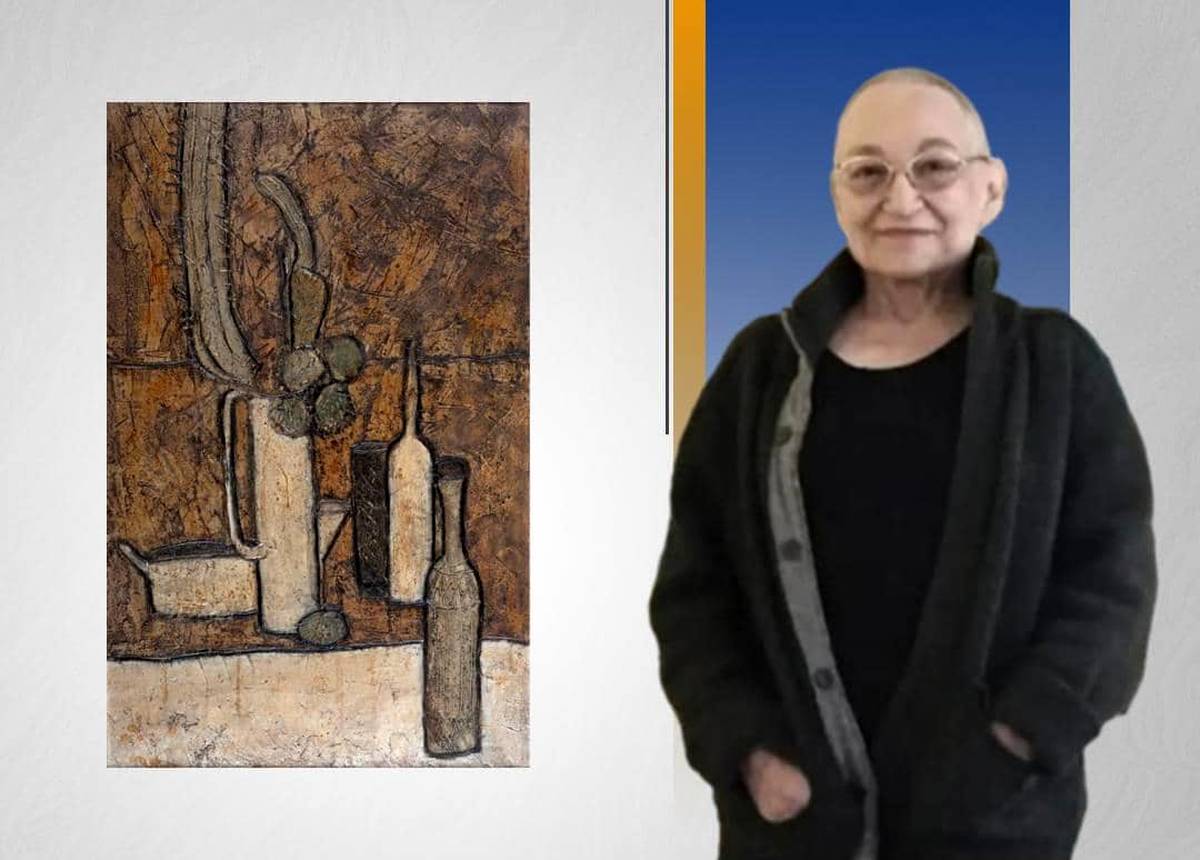
Raha Gallery Collection
Parvaneh Etemadi and Minimalist Painting: Analyzing a Piece from Raha Gallery Collection
Parvaneh Etemadi , a pioneering lady of Iranian painting, passed away about two weeks ago at the age of 77. She had a very minimal and unique approach to painting, and her works were highly praised and appreciated both artistically and within the art market. On this occasion, a fascinating and interesting painting by this artist from the Raha Gallery Collection is analyzed and reviewed.
ArtDayMe : The Middle Eastern Raha Gallery Collection, which has been actively promoting regional art for more than two decades, houses a diverse range of modernist and contemporary masterpieces by Iranian and Arab artists.
One of these works is a piece from the famous still life series by Parvaneh Etemadi . This work, measuring 59×92, was created in 2011 using oil paint on cement.

Parvaneh Etemadi (born 1948 - passed away on March 20, 2025) is recognized for her still life paintings, especially her cement paintings, from the 1970s. In 2016, she was listed among the 500 most expensive artists in the world by the prestigious Art Price Institute—a highly valuable title for a female artist in the Middle East.
Ms. Etemadi held her first exhibition in 1969 at Ghanderiz Hall (one of the most influential galleries of modern Iran). It is said that Jalal Al-e Ahmad, a renowned Iranian writer, was Parvaneh's literature teacher at Shahdokht High School. Upon noticing her extraordinary talent in painting, he sent Bahman Mohasses (a celebrated Iranian painter) to teach her painting privately. Thus, it is mentioned in her biography that: "Parvaneh Etemadi began learning painting under Bahman Mohasses and is considered his only direct student."
Perhaps when you observe Parvaneh's still life series, you might feel she has drawn inspiration from Mohasses. However, these stunning works of Parvaneh are clearly unique in terms of their execution techniques.
"This very piece by 'Parvaneh Etemadi' in the Raha Gallery Collection beautifully reflects the distinctive perspective of this artist:
From a technical standpoint, Parvaneh Etemadi in this work utilized oil paint on cement—a unique and unusual technique in painting, which indeed gained her fame beyond borders.
The cement base creates a rough and uneven texture, adding a strong visual depth and sensory impact to the work. In this technique, the high density of oil paint allows for the creation of thick and rich layers. The combination of this paint with the cement texture results in highly contrasting surfaces that reflect light in a unique way.
The composition of the work is vertical and static. Objects are positioned in the center and to the right of the image, with the background executed flat and textured.
The main elements include a jug, a bottle, and a cactus, which feature simplified and abstract forms. Emphasis on peripheral lines and highlighting forms in a relief-like manner conveys a sense of stillness and solidity.
The use of cement and deep scratches around the surfaces, the simplistic shapes and forms of the objects—while embodying modern approaches and simplification of surfaces and volumes—through simple linework, unpretentious choices, straightforward themes, and a unique inner and sensory perspective, also evoke the feel of traditional Iranian miniature painting and Far Eastern art.
One could consider 'purity' as the most significant element of paintings like this piece: purity in color, form, subject choice, and the coexistence of simple and unembellished objects, which like life, all remind one of simplicity and introspection with an Eastern approach. This distinct quality shapes Parvaneh Etemadi paintings.
In the presented painting, the artist, by limiting colors and using a different technique, engages the audience in thought-provoking analyses.

From a content and symbolic perspective, this prominent piece in the Raha Gallery Collection contains interesting elements:
- The objects present in the work include a jug, a bottle, and a cactus. Each of these elements can bear symbolic meanings:
- Jug and Bottle: Symbols of preservation and protection of liquids, potentially referencing the concept of time and holding memories.
- Cactus: A plant resilient to dryness, symbolizing endurance, patience, and life's hardships in both Iranian and global visual culture. In this work, one of the cactus's petals has fallen, possibly signifying a crack in that patience.
- Rough and dark textured background: Alluding to the passage of time, erosion, or even an abandoned and reminiscent atmosphere.
The predominant colors in the work—brown, cream, and black—combine to evoke nostalgia, earthiness, and even sorrow:
- Brown and Cream: Earthy tones that bring warmth, antiquity, and a sense of memory.
- Black: An element that gives the work a serious, somber, and simultaneously solid character.
- High contrast between light and shadows: Creates a dramatic sense and emphasizes the prominent forms.

Parvaneh Etemadi is one of the pioneers of modern art in Iran, and her works often lean towards a form of minimalism deeply rooted in the visual traditions of Iran. The selection of everyday objects and their arrangement in a raw and simple space recalls ancient traditions, as well as the poetic perspective towards objects in Iranian culture. In this piece, signs of simplicity and austerity are apparent, which might reflect the social and cultural state of the era in which the work was created, or the mental and social conditions of the artist or the society in which she lived.
This Art work belongs to the Raha Gallery Collection."

LEAVE A RELPY